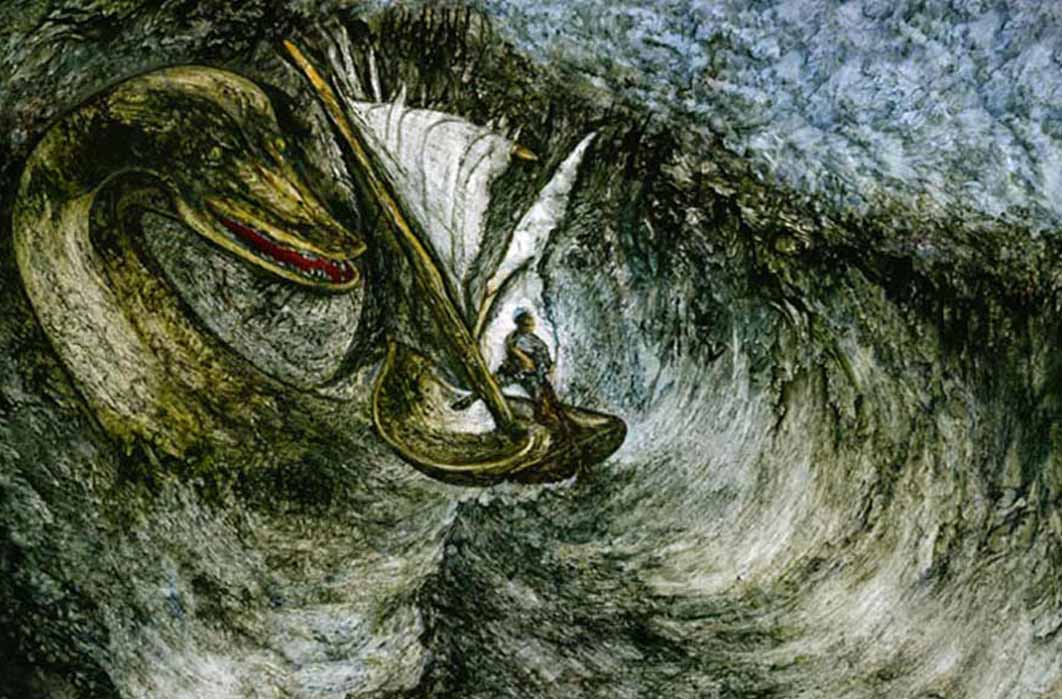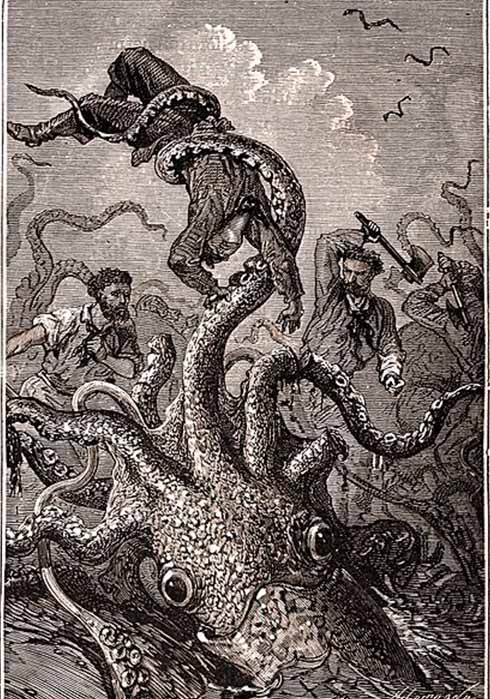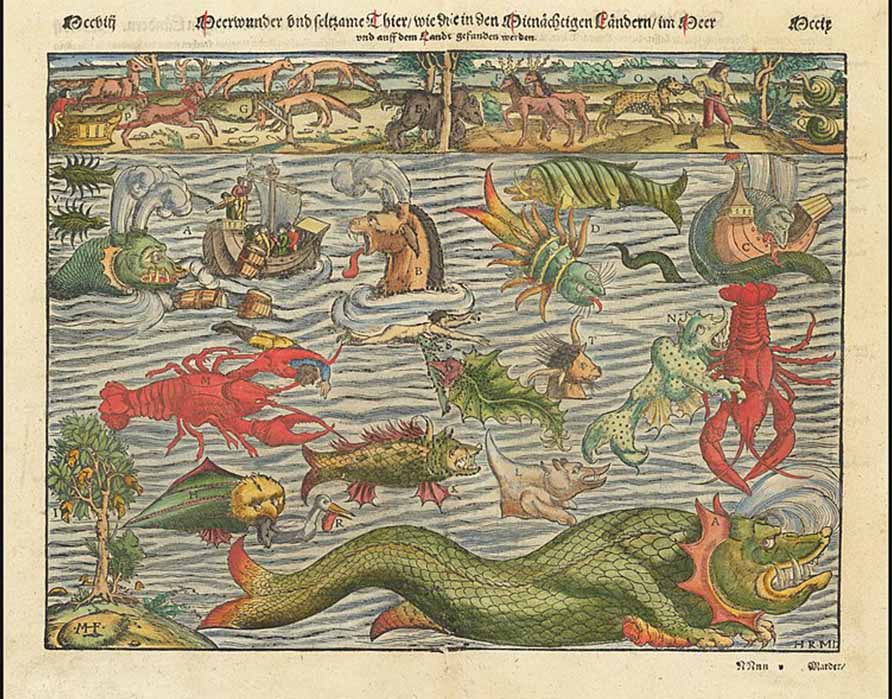
Unmerciful Diets of Ancient Sea Monsters Of The Northern Abyss
Unless having been to sea, far enough out to lose sight of land on an open wooden craft, no-one would quite understand the terror endured by ancient seafarers braving the unknown oceans. Mariners skiffing over the surface of a storm-torn ocean at night, many miles from shore with nothing but water in all directions, would be in a constant state of anguish and trepidation at what might be lurking in the watery depths, ready to devour them. These ship-born fears would over time birth a whole range of fabulous imaginary monsters and sea creatures. In history, much like today, what the eye cannot see, the mind accounts for and so the solitary Narwhal's horn discovered on a beach became the unicorn, and the isolated tentacle floating at sea could only have come from an enormous kraken.

Giant squid by Alphonse-Marie-Adolphe de Neuville, from Jules Verne’s ‘Twenty Thousand Leagues Under the Sea’ Hetzel copy. (Public Domain)
Washed-Up Sea Monsters
Many of history's sea monsters were in fact washed up, half decaying, misinterpreted parts from unknown sea creatures like sea lions and whales, but many more crawled from the caverns of the human creative imagination. These specific creatures, many of which thrive today in pop-culture, do not so much offer insights about the natural world, as much as they shine light on just how dark the human mind can get, especially when it is all alone at sea, at the mercy of monsters.
When European explorers first embarked on voyages of discovery in the 15th and 16th centuries, the so-called ‘Age of Exploration’, sea monsters were believed to be very real and they were detailed in early European natural history books, on maps and sea charts. In 2018 David Fernandez the curator of the Thomas Fisher Rare Book Library in Toronto, launched De Monstris, a stirring exhibition exploring a bizarre set of medieval monsters. Fernandez relates that monsters have “stoked fears and tickled imaginations throughout history,” and that “monsters are an integral part of our shared cultural heritage.” Fernandez’ collection of monsters includes a 15th-century edition of History of Animals written by Aristotle, the Greek philosopher and polymath, which suggested if a pregnant woman even looked at an image of a monster its grotesque features would be engraved on the child’s face.

Chart depicting both terrestrial and sea monsters by Sebastian Munster (1570) (Public Domain)
Many words have been written on the history of monsters, especially in Greek, about warm water Mediterranean creatures, but less popular is a compilation of sea monsters specifically from colder northern latitudes.
Inuit Child Snatching Sea Monsters
‘Inuit” is the Inuktitut term for “the people” and these indigenous people have traditionally inhabited the northern regions of Canada and the tundras of Alaska, Canada, and Greenland. The Inuit homeland is known as Inuit Nunangat, referring to the land, water and ice of the northern Arctic region. Living on the edge of the sea, Inuit children are taught to never get too close to the edge of the ice, for lurking beneath is the child snatching Qalupalik. According to writer Brian Bergman’s 1996-book Arctic myths and magic, like many monsters of the old world, this one too was particularly fond of misbehaving children. There is no one description of the Qalupalik and accounts vary from place to place, but literature repeatedly describes these monsters as having long fingernails and green slimy skin, like seaweed. In some stories ‘he’ is a powerful male and in other ‘she’ has long flowing hair, again like seaweed, and it is said her kidnapped children brushed and maintained her long hair while in captivity. Inuit children were warned that when Qalupalik was near it would make a distant hum under the sea, but when close by it would gently tap its fingers on the ice sheet under the children’s feet. In most tales, Qalupalik carried an amautiit (child carrying seal skin pouch) which it used to snatch children and take them under the waves.





